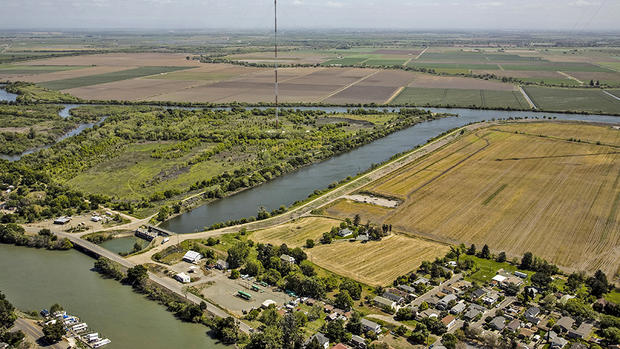Drought Prompts State to Order Halt to California Delta Water Drawdowns by Rights Holders
SACRAMENTO (CBS SF) -- Thousands of water rights holders, including farms and cities, were ordered to stop drawing water from the Sacramento-San Joaquin Delta by the State Water Resources Control Board on Friday.
Under the order, 4,500 of the Delta watershed's 6,600 rights holders were told to halt drawing water in order to protect drinking water supplies, prevent sea water from pushing into the Delta and to minimize the drought's impacts on fish stocks and the environment, according to Water Board officials.
"Curtailing water rights has an impact on livelihoods and economies but it is painfully necessary as severe drought conditions this year and next could threaten health, safety and the environment," said Deputy Director of the Division of Water Rights Erik Ekdahl.
The state is offering reporting and technical assistance to all right holders and will regularly inspect water diversions and investigate complaints to make sure the order is followed.
In early August, state officials said the curtailments are needed to maintain water supplies in three key upstream reservoirs -- Shasta, Folsom and Oroville, all of which are well below historical averages for this time of year.
As of Thursday, Shasta was at 29 percent of capacity, which is 43 percent of its historical average, Folsom was at 24 percent of capacity and 36 percent of average and Oroville were at 23 percent of capacity and 34 percent of average, according to data from the state's Department of Water Resources.
Without Friday's order, the drinking water supply for 25 million Californians and water for more than 3 million acres of farmland could be at significant risk within the next year, state officials said.
The Delta's critically low water levels are the result of climate change-driven drought conditions and were exacerbated in the spring when water rights holders drew water "earlier and in greater volumes" than in previous years, according to state officials.
This led to the loss of roughly 800,000 acre-feet of water, enough to supply more than a million households for a year, state officials said.
© Copyright 2021 CBS Broadcasting Inc. and Bay City News. All Rights Reserved. This material may not be published, broadcast, rewritten or redistributed




